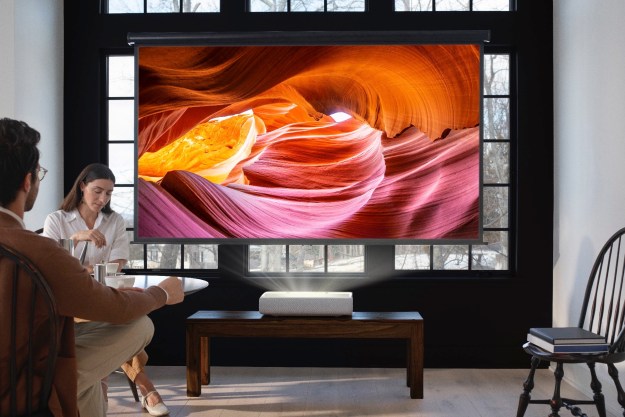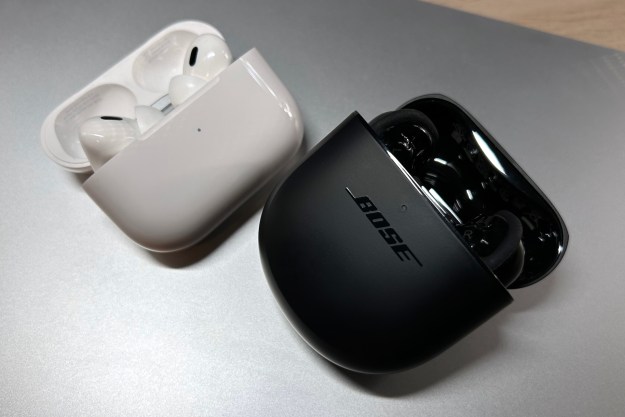There now are so many ways for you to get all the shows and movies you want on all your favorite streaming services, be it Netflix, HBO Max, Amazon Prime Video, Hulu, Disney+. But the most popular choice by far is still a streaming device, such as a set-top box or streaming stick that you connect to your TV with a simple but effective HDMI input.
But the major players in the streaming device game — Amazon Fire TV, Apple TV, Android TV, Google TV, Roku — are all fighting for your money, so we're here to make sure you throw it at the right streaming device for you and your budget, which typically ranges from as low as $30 to as high as $200.
Further compounding the issue is that if you have a smart TV from the past several years from any of the big TV brands, there's a pretty good chance that you might not even need to plug in any other sort of smart streaming device, thanks to the built-in operating system and a plethora of available streaming apps. And that's not even counting features like Chromecast or AirPlay 2, which make it simple to stream any sort of content you want from any Android, iOS, Chrome, or Mac device.
Our top two picks are in a class of their own. They’re the best choices you can make. They’re also the most expensive — by quite a good bit. Elsewhere, we’ll get into picks that are more comparable in price and function. And at that level, it’s really more about ecosystem and personal choice than anything else.
We get paid to make some tough decisions here, though. So without further ado, let’s get into it.

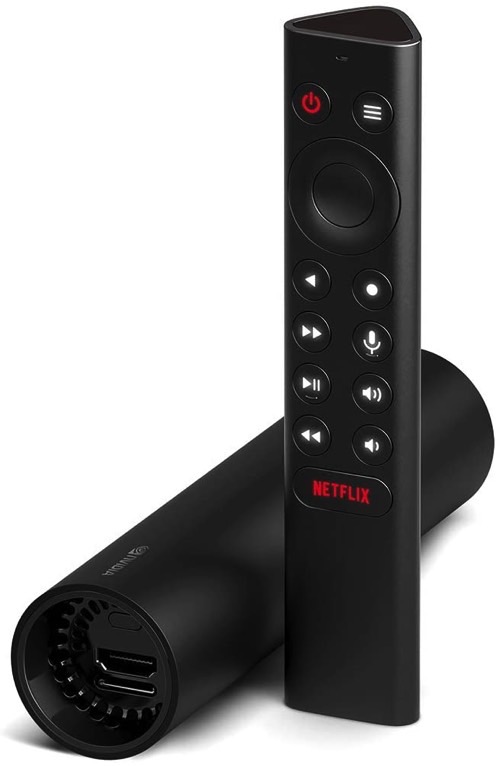




Apple TV 4K (2022)
The best overall streaming device
- Lightning quick navigation
- Gorgeous Audio and Video output
- Feature-packed
- Extremely Powerful
- Intuitive, uncluttered interface
- Several features exclusive to Apple users
Why you should buy this: It's still the simplest, most consistent experience you can get, with a relatively open-ended shelf life. And that's what you want if it's something you're going to use almost every day. And with the new 2022 model, it's gotten that much better.
Who it's for: Anyone, really (and our Editor at large, Caleb Denison, who is a recent convert), so long as they have the cash to spend. While those in the Apple ecosystem can make use of some of the extra features, it's not just for those with iPhones and iPads.
Why we picked the Apple TV 4K:
In the world of $50 streaming sticks that absolutely can get the job done and get it done well, it's perhaps a little hard to recommend something that costs three or four or five times as much. And to be clear, Apple TV 4K doesn't do three or four or five times as much as its competitors. In fact, you can make the argument that it does a little less. More on that in a second. But what it does do, it tends to do better — and with fewer headaches.
What you get for that extra money is hardware that should darn near last forever. (Just ask anyone who's still happily using the original Apple TV 4K, released in 2017.)
It's tempting to say that the new 2022 model is nearly identical to what was released the previous year, and that's mostly true, insofar as what the end user sees. The box itself is a little smaller, having gotten rid of the fan that you probably never heard anyway. And the internals have been spruced up, too. It's now powered by the A15 Bionic processor, which provides plenty of headroom. And there's now support for HDR 10+, which is important if you own a Samsung TV. (Samsung doesn't support Dolby Vision.)
There also now are two models from which to choose. One has 32GB of storage and only uses Wi-Fi for connectivity. You do not want this model. Probably.
What you should really look at is the one that costs $20 more and includes Ethernet (of the super-fast Gigabit variety), as well as support for Thread and Matter. Those latter bits are new standards for smart-home connectivity, which allow devices to talk to each other directly. You might not care about that now, but it's the future of smart home tech. Between that it having double the on-board storage capacity (and to be fair, 64GB is almost certainly too much, but nobody ever regretted having too much storage), this is the model you should consider.
And that's all followed up by software updates that will span years in the future. The fourth-generation Apple TV — the last to top out at HD resolution — released in 2015 is still supported on tvOS. So there's plenty of reason to believe that an Apple TV 4K purchased today should last at least five years, insofar as the software is concerned.
Apple's tvOS is even more simple than its current phone and tablet software. The home screen is app icons, and that's it. No real recommendations of shows or movies or live channels. No advertising. Nothing that overwhelms. That simplicity in and of itself may well be worth the extra money.
Those who are all-in with Apple's ecosystem also will get the added bonus of things like AirPlay 2 and HomeKit — as well as ridiculously slick integration of using your iPhone or iPad for the on-screen keyboard. But even if you're not, you'll still be able to snag all the apps you could possibly need for your home viewing experience. And they're all done in accordance with Apple's developer standards, which are decidedly higher than other platforms on this list.
Need more? How about Apple Fitness+? It's got full integration with Apple TV 4K, which is perfect with more people exercising from home than ever before. And if you're a big gamer, then Apple Arcade will be an appealing addition. And there's a decent chance that the A15 Bionic processor is going to open up more gaming on the platform at some point. Stand by for that.
Apple TV 4K isn't inexpensive. But it's still the best.

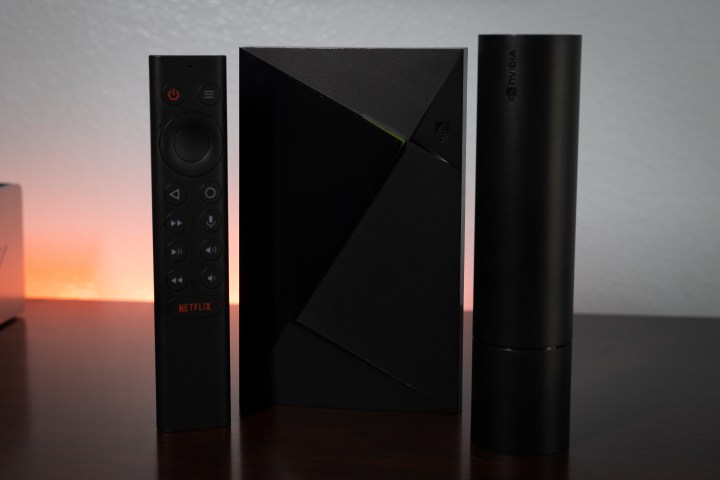
Nvidia Shield (2019)
The next-best streaming device
- Great for game streaming
- Good variety of apps
- Excellent AI upscaling
- Doesn't come with a game controller
- No included HDMI cable
Why you should buy this: It's the best hardware that's not Apple, plus a great option for gamers.
Who it's for: If you're all about Android (or just don't want Apple) but still want powerful hardware that's going to last a long, long time.
Why we picked the Nvidia Shield:
The Shield (also often referred to as "Shield TV") has a history dating back to 2015. That ancient hardware, running Nvidia's Tegra X1 processor, was overpowered for the time and keeps that original box running just fine today.
The most recent Shield, released in 2019, comes in two flavors. Both add Dolby Vision into the mix in addition to Dolby Atmos decoding. The non-Pro model comes in a cylindrical body for some reason. The Pro has more RAM and doubles the onboard storage to 16GB (both models still allow for external storage) and is meant for gaming via Nvidia's G-Force Now system. And the Tegra X1+ processor is as good now as it was at release. Additionally, Nvidia does a great job at ensuring even more longevity to its devices with frequent updates that bring additional features and capabilities to the box.
We absolutely expect Shield to remain a viable option in the years to come. What little concern we do have rests more on Google's shoulders than anything else — the company has a habit of unexpectedly killing off products when it no longer finds use for them. That said, Google TV (and Android TV) are in enough first- and third-party products at this point that any such concern probably is moot. Probably.

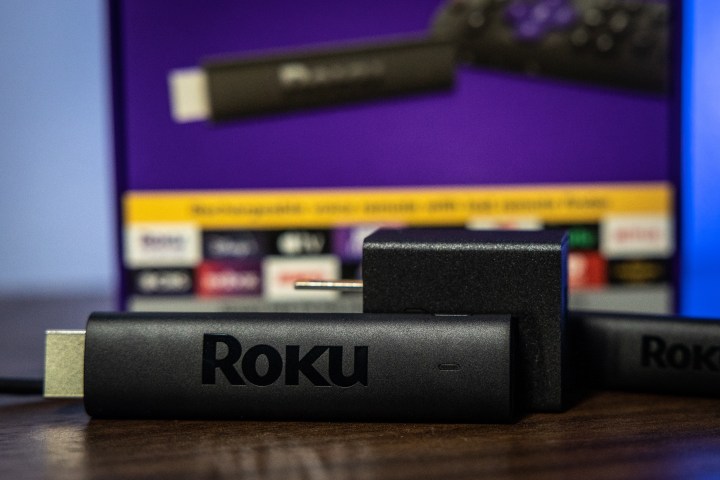
Roku Streaming Stick 4K and 4K+
The best of the inexpensive streaming devices
- Affordable
- Easy to use
- All the features you want
- Roku's advertising scheme means tracking
Why you should buy this: Roku has a fairly simple user interface, all the apps you need, and a lot of free movies and shows.
Who it's for: Anyone and everyone. Just know that Roku is very much in the advertising business, and advertising means data tracking.
Why we picked the Roku Streaming Stick 4K:
Roku is the grandfather of streaming, back before it really became a thing. It remains as easy to use as ever, with "Channels" taking the place of apps. They're really the same thing, and one Roku device works exactly the same as the next. It's just a matter of what specs and features you get at what price.
The Streaming Stick 4K and Streaming Stick 4K+ are identical, insofar as the sticks themselves go. You get 4K UHD resolution, support for Dolby Vision and Dolby Atmos, and improved Wi-Fi over previous models. The "Plus" side of the equation comes with the inclusion of the Roku Voice Remote Pro, which gives you hands-free voice control. Just say "Hey, Roku," and the remote will hear you and execute your commands. It does so at a $20 premium ($50 and $70, respectively), which is worth it if that hands-free stuff and private listening via a headphone jack are important to you.
The latest Roku OS 11 update also brought some nifty new features that may tip the scales for you, if you're into them. Roku Photo Streams is the big one, a feature that allows you to upload your photos and share them with other Roku users. The update also brings some cool audio features, one that amplifies dialogue and preset dialogue modes for those with Roku Speakers. Content discovery also gets a boost, too.
Roku has really started to stand out in the past couple of years with its inclusion of free shows and movies on its own distribution source, the aptly named The Roku Channel. The series and movies are all supported by advertising. There's a lot of old content that you'll recognize, as well as new original content. It also has dipped its toes into the realm of more standard original content with its own series, and presumably more is on the way.
Advertising-based content means more tracking, however, and that's just something you have to keep in mind when it comes to Roku. But it's hard to argue against the value proposition of the Streaming Stick 4K.

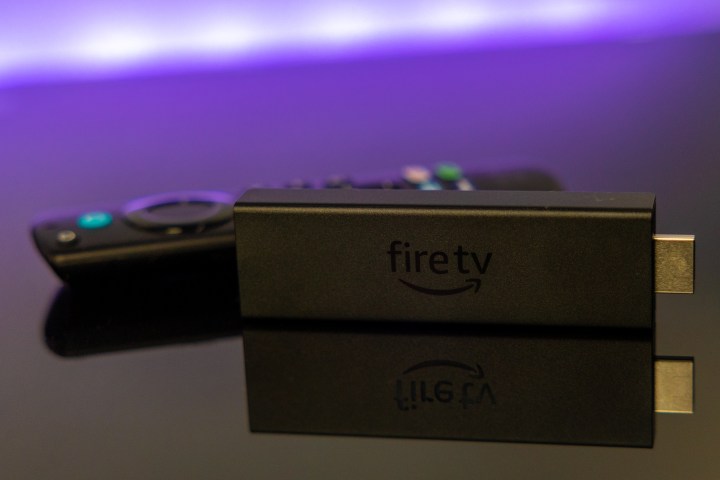
Amazon Fire TV Stick 4K Max
Also great, but for those who don't want Roku
- Better processor and Wi-Fi
- Includes the new remote control
- Still extremely affordable
- Built on an aging version of Android
Why you should buy this: If Roku just isn't your thing or you prefer the native Amazon and Alexa experience.
Who it's for: Anyone who's all about that Fire TV lifestyle.
Why we picked the Amazon Fire TV Stick 4K Max:
The original Amazon Fire TV Stick 4K has been a great buy for a couple of years now. Making it more "Max" just made it that much better. The Amazon Fire TV Stick 4K Max now has newer internals with a faster processor, Wi-Fi 6, and support for Dolby Vision. It ships with the latest Alexa Voice Remote, which doesn't include hands-free voice access but does have proper television controls.
What it doesn't change is the same great experience you'll get with Amazon Fire TV OS. While the home screen may still be a bit busy for some, that's just a testament to how much great content is available in the Amazon ecosystem. Start with Amazon Prime Video, of course, which has all the movies and series you could possibly want, as well as more than its share of great original content.
Then you can add in things like Freevee (formerly IMDb TV), which is Amazon's own advertising-based streaming platform with free movies and shows, or connect an antenna to an Amazon Fire TV Recast and get your local broadcast channels right there in your native Fire TV experience.
And that's all before you get to all the third-party streaming apps, games, and other options available on Amazon Fire TV. The Amazon Fire TV Stick remains an excellent choice and one that's tough to beat.

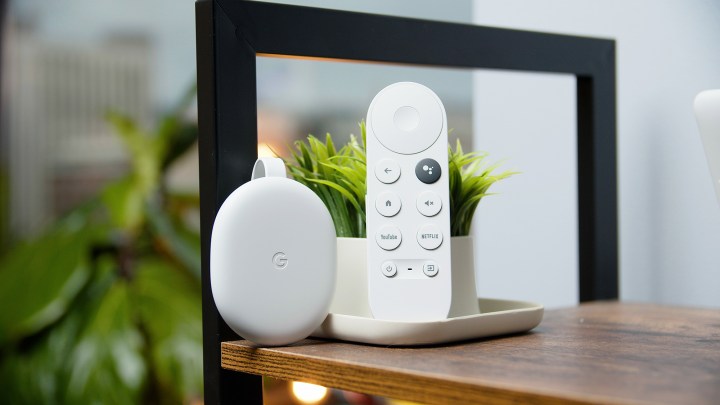
Chromecast with Google TV
Everything you want in a Chromecast
- Affordable
- Dolby Vision and Dolby Atmos support
- Slick UI
- Responsive
- Integrated Google Assistant
- Dolby Vision always on by default
- Recommendation algorithm still learning
Why you should buy this: All the power of Google in one little stylish dongle.
Who it's for: Anyone who wants to stay in the Google ecosystem but not spend a ton of money.
Why we picked Chromecast with Google TV:
When it comes to Android-based hardware, you typically get what you pay for. Cheap Android sticks are a dime a dozen and should mostly be ignored, as support can be iffy. Sticking with Google's own hardware means that you're going to get all the features and support that you want, plus the security that you should demand.
Chromecast with Google TV is the first Google hardware with the next-generation operating system. Technically, it's built on Android, but this isn't your father's Android TV device (or your grandfather's original Google TV device, but that's a trip down memory lane for another time). It's got the new operating system and home screens. It does a better, more sophisticated job of surfacing things you want to watch and apps you want to use. Sometimes to a fault.
And, yes, it's still a Chromecast, making it super easy to get any sort of content from a phone or Chrome browser onto your television.
The biggest complaint we have is that like other hardware in this price range, it can be a tad underpowered, and that's a concern when you're drawing as many images on the screen as Google TV does. And when you're talking about a device that you're likely going to be using every single day, even a little bit of lag gets amplified.
Still, though, it's a great way to round out the trifecta of affordable streaming devices.

Frequently Asked Questions
We test our streaming players over a period of days or weeks, replicating exactly how you’d use them in real-life scenarios. That includes testing them for speed, convenience, intuitiveness, and a variety of features. Accessibility to a wide variety of apps is also crucial — after all, most TVs and Blu-ray players already are set up for basic streaming — so a designated streamer should offer something more.
But beyond that — we watch TV, too. We use these devices day after day, year after year. We live with them, just as you'll live with them.
A streamer might have the best hardware in the world, but this won’t matter if you can only watch content from one streaming service. To meet our standard, a streaming media player ideally supports all or most of the major content providers, as well as a wide variety of newer features like 4K Ultra HD and HDR. Finally, we look at how much quality and how many features you get on a dollar-by-dollar scale to ensure each of our top streamers is not only a great experience but also a great value.
Roku: Roku’s interface is consistent across every model, whether you’re talking the top-of-the-line Roku Ultra or the entry-level Roku Express. There also is a certain look to Roku apps (which the platform calls "Channels"), and you won’t find interface differences across different apps as much as you might on other platforms.
As we’ve mentioned before, you’ll find nearly every streaming service or channel you care about represented here, and unlike certain other platforms, you won’t find any gaps, with the notable exception of iTunes, which is only available on Apple streamers.
Amazon: Like Roku, Amazon offers a single experience across a bevy of devices. It's got four Streaming Sticks at various prices, the Fire TV Cube, which offers the same features plus hands-free voice control, various Fire TV televisions with the operating system built-in, and third-party soundbars that also have Fire TV OS built-in.
Apple TV: As you might expect, Apple TV devices are designed to offer a seamless experience, especially when paired with other Apple products. In addition to offering a huge number of streaming apps, the Apple TV platform also supports Apple Arcade, Apple TV+, and Apple Fitness+, and can even act as the master control for HomeKit devices. HomeKit-compatible security cameras, for instance, can be streamed to the Apple TV with just a few clicks.
The Apple TV app (yes, there's an app that goes by the same name as the device) is actually a curated and personalized interface for browsing content from your favorite streaming services as well as being the official home of Apple TV+. Other features include watch lists, watch next, and dedicated tabs for sports and live TV.
Apple would prefer that users buy and rent content via iTunes, so you won’t currently find an app for Google Play Movies and TV. There's a workaround: Make sure you're signed into the YouTube app, and your purchases should show up. Failing that, Google Play offers a mobile app that allows content to be streamed to an Apple TV via AirPlay— but only from an iOS device.
Android TV (Nvidia Shield, Chromecast with Google TV): Android TV is a little different from the other options here in that manufacturers can put their own spin on the interface, similar to phone manufacturers with Android.
You'll find that many apps exhibit plenty of individuality on Shield TV and Chromecast with Google TV, which contrasts with the visual in-app consistency with Roku apps. There were some annoying gaps early on, such as Amazon Prime Video not being available out of the box outside the U.S., though that issue has since been rectified. Generally speaking, Android TV devices include the Google Assistant for voice commands and smart home control, and they have Chromecast built-in, too.
Google is said to be slowly migrating Android TV over to the Google TV interface, which debuted on the Chromecast with Google TV. This interface de-emphasizes individual apps in favor of a curated and personalized content recommendation layout that is arguably much more helpful when trying to find something to watch.
Chromecast: Until the debut of the newest version of Chromecast with Google TV, Chromecast ran entirely on the magical power of casting — i.e., beaming content from one device wirelessly to your TV. Everything about the Chromecast was controlled via your casting device — including app search, content playback, and even private listening modes — whether that's an Android or iOS smartphone or tablet, a Windows PC, or a Mac.
But the new Chromecast with Google TV changes that script, bringing in a handy remote control and on-screen interface. Essentially, this new $50 dongle is the best of both worlds.
4K ultra HD: While no longer the highest resolution available (that title goes to 8K), 4K UHD is the highest resolution with significant support from content creators and distributors. At around four times that of 1080p HD (3840 x 2160), it's the standard for all but the most expensive new TVs.
802.11ac Wi-Fi: Superseded by Wi-Fi 6, 802.11ac is still plenty fast — fast enough even for streaming 4K HDR content — but it's not as reliable (or as fast) as Ethernet.
Android TV: An app-centric smart TV platform powered by Google's Android software and available across smart TVs, set-top boxes, and more.
Google TV: A curated and personalized smart TV interface that runs on top of the Android TV software. We expect that Google will eventually make the Google TV experience the default for all Android TV devices.
Casting: A term popularized by Google for making content found on a mobile device or PC appear on a TV or wireless speaker.
High dynamic range (HDR): Short for high dynamic range, HDR offers better contrast, better brightness, and more colors than standard dynamic range (SDR). It's considered by many to be a more notable visual improvement than the jump from 1080p Full HD to 4K Ultra HD resolution. Not all media streamers support it, and of those that do, not every flavor of HDR is necessarily supported.
HDR10: The most widely adopted HDR format. If you buy an HDR TV, it may support other formats too, but it will always have HDR10.
Dolby Vision: A dynamic HDR format (as opposed to the static HDR10), Dolby Vision has several advantages, such as the ability to gauge your HDR TV's capabilities and tailor the HDR experience. Not all TVs or media streamers support it, however, so be sure to check the specifications before you buy.
HDR10+: A license and royalty-free dynamic HDR format that competes with Dolby Vision. It initially showed up on Samsung TVs (which do not offer Dolby Vision), however, it is now gaining traction among other TV makers like TCL and Vizio. So far, only a handful of streaming video services, like Amazon Prime Video, support HDR10+.
Dolby Atmos: A technology that allows sound designers to specify the positioning of audio in an immersive, 3D soundstage. Sounds can be placed anywhere around a room, bringing you deep inside the action on-screen. Dolby Atmos sound systems can include multi-thousand-dollar setups with installed ceiling speakers, but can also be had in a $200 soundbar that creates a virtual Atmos experience from as few as two channels. Support for this sound format varies from device to device, and not all streaming services offer Dolby Atmos content. Those that do, don't offer it on all of their TV shows and movies.
Single sign-on (SSO): A feature that allows users to use a single login to automatically sign in to all linked apps, provided they support the feature. This is supported by each of the devices we've picked here, but it requires an account through a paid TV provider.
Editors' Recommendations
- This LG 75-inch 4K TV is a steal at $580 at Best Buy — save $220
- The best TV brands of 2023: from LG to TCL, which should you buy?
- The best wireless headphones for 2023: which should you buy?
- The best soundbars 2023: which should you buy?
- Best headphones for 2023: Sony, Sennheiser, Apple, and more




